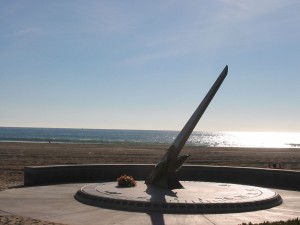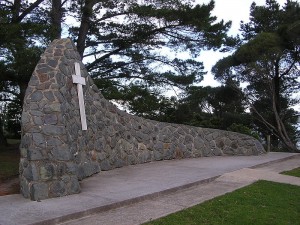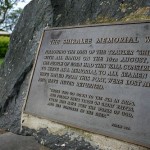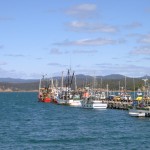Archive for January, 2011
 On January 31, 2000 Alaska Airlines Flight 261 plunged into the Pacific Ocean near the Channel Islands off the beautiful beaches of Southern California. The aircraft was a McDonnell Douglas MD-83 on a scheduled flight from Puerto Vallarta, Mexico to Seattle, Washington, with an intermediate stop at San Francisco. All eighty-eight passengers and crew aboard the aircraft were killed, many lost at sea.
On January 31, 2000 Alaska Airlines Flight 261 plunged into the Pacific Ocean near the Channel Islands off the beautiful beaches of Southern California. The aircraft was a McDonnell Douglas MD-83 on a scheduled flight from Puerto Vallarta, Mexico to Seattle, Washington, with an intermediate stop at San Francisco. All eighty-eight passengers and crew aboard the aircraft were killed, many lost at sea.
This accident is one of the most written about in recent memory, mainly because it was determined to be caused by a mechanical failure that could have been prevented. A simple jackscrew mechanism that controlled stabilator trim on the aircraft failed – resulting in a total loss of pitch control. The aircraft plunged nose first into the water, despite all efforts to regain control of the aircraft by the flight crew. This tragic loss was due to a failure to perform routine maintenance by Alaska Airlines and a failure to conduct adequate oversight of maintenance by the Federal Aviation Administration.
The Sundial Memorial at Port Hueneme Beach Park is a beautiful combination of remembrance of the dead and a vision of hope for the living. Designed by Santa Barbara artist James “Bud” Bottom, the memorial consists of a 20 foot diameter base and an 11-foot tall bronze arm. The names of the victims are found on bronze plaques circling the base. Every year, on January 31st, at the exact time of the crash, the shadow caused by the bronze arm darkens a special plaque on the sundial’s face.
Port Hueneme was the base of operations for recovery efforts after the crash. On the one year anniversary on the crash, a boat from Port Hueneme ferried family members to the crash site near Anacapa Island. The boat was surrounded by a pod of approximately 1,000 dolphins at the crash site – an enduring memory for all those on that ferry that day.
Dolphins, according to legend, help transport the souls of people lost at sea. Attached to the bronze arm of the sundial are dolphins, free of the water and soaring high. It’s a most fitting image on a memorable memorial…
I have been, and will continue to be, very careful about invoking politics, religion, or other controversial topics into this blog. Such discussions have no place here. This is a site to remember and honor the souls of those lost at sea – and to marvel at the beautiful memorials created by survivors, family members, friends, governments, talented artists, and the many generous contributors and volunteers who work so long and hard to make these memorials grow from an idea to reality.
Unfortunately, the dedication of any memorial is not the end of the journey. Most memorials are designed and constructed using private funds. Often, not enough thought is given to the long-term funding and maintenance requirements of the memorial. Human traffic and the natural elements will take their toll – the memorial can become weathered, eroded, or damaged by vandals, with no funding available to repair the damage or even to provide minimal upkeep.
If you live near one of these beautiful memorials, please consider volunteering your time and energy towards maintaining the site in its original state. If you’re a visitor, then please give whatever money you can to the foundation responsible for its upkeep.
 Quite often a simple design can most effectively relate the power of the sea. The Seamen’s Memorial Wall in Eden, Australia is a striking example. The wall was originally designed and built as a memorial to the fishing trawler ‘Shiralee’, lost with all souls on August 10, 1978. Today plaques dedicated to the memory of 24 New South Wales souls lost at sea are attached to the granite wall shaped like a giant wave. These plaques include the names of two sets of fathers and sons who were lost on separate occasions.
Quite often a simple design can most effectively relate the power of the sea. The Seamen’s Memorial Wall in Eden, Australia is a striking example. The wall was originally designed and built as a memorial to the fishing trawler ‘Shiralee’, lost with all souls on August 10, 1978. Today plaques dedicated to the memory of 24 New South Wales souls lost at sea are attached to the granite wall shaped like a giant wave. These plaques include the names of two sets of fathers and sons who were lost on separate occasions.
Eden is located on Twofold Bay, a beautiful refuge from the Tasman Sea to the East. Eden was for generations a leading port of the whaling industry. It’s location was a perfect spot to intercept whales migrating from the Antarctic to the waters of the Great Barrier Reef. Eden remains a vibrant hub for the Australian fishing industry – and a place of extraordinary natural beauty, befitting its name. But the beauty and peace of any port, unfortunately, often becomes the final memory for some mariners. Fishermen who take to the seas always do so at great risk – some never to return to their personal Eden…


